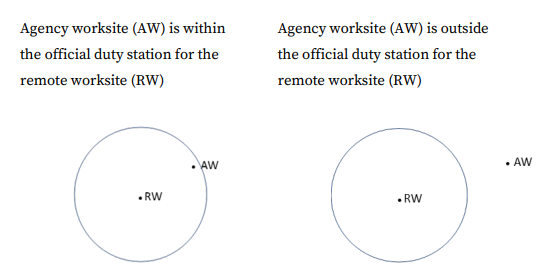With the federal workplace about to change, OPM reminds feds how to count travel hours
The new guidance from OPM is meant to help agencies and employees understand when travel time counts as hours of work, versus commute hours, for both teleworkers...
With many agencies’ return-to-office plans taking effect as early as next month, the Office of Personnel Management is making a few clarifications on when hours traveling to and from the office do — and don’t — count as hours worked in a day for federal employees.
Although most teleworking and remotely working feds are on set schedules of when they’re expected to be on-site, situations can arise where employees might have to come to the office unexpectedly, and that can make things a little complicated. OPM said telework and remote work schedules can raise “special issues” when applying rules around hours of work, from Title V or the Fair Labor Standards Act, if teleworking or remotely working employees work on-site when they’re not scheduled to.
“As the federal workplace landscape changes, agencies must continue to correctly apply the rules concerning hours of work for all federal employees, including those who are teleworkers and remote workers,” OPM said in the guidance, published Monday.
For federal employees, there is a clear distinction between telework and remote work. By OPM’s definition, those on a telework schedule work on a “regular and recurring basis” both in the office and from home. Employees on a remote schedule generally work off-site and are not expected to regularly report to the office.
The new guidance from OPM is meant to help agencies and employees understand when travel time counts as hours of work, versus commute hours, for both teleworkers and remote workers.
OPM’s guidance comes on the heels of many agencies announcing changes to their telework and in-office requirements for federal employees, which will inevitably lead to more days in a week that currently teleworking feds will have to commute to and from the office, and potentially leave some open-ended questions on how to count that commuting time.
It all depends on the context, including whether the employee was required or chose to work at the office, whether the employee works a full or part day at the office, the timing of the commute between home and the office, as well as whether the office is within the official duty station of an employee’s remote worksite, OPM said.
OPM offered several examples to help agencies and employees determine when to count hours spent traveling as commute hours, or as hours actually worked.
For instance, if an agency notifies a teleworking employee, prior to the start of the typical workday, that they’re required to come to the office that day, then traveling to and from the office would count as commuting time, and not hours on the clock.
In the case that an employee starts their day at home, and then an agency requires them to come to the office in the middle of the day, the time the employee spends traveling from home to the office during the workday counts as hours of work. But if that employee chooses, and is not required, to come to the office, then that travel time counts as commuting time.
The situation is a little different for remote employees, and how to count the hours depends on whether the agency’s office is within that employee’s official duty station. If an agency asks a remote worker, prior to the start of a given workday, to report to the office that day, the employee’s travel time counts as commuting time if the office is within their official duty station. If the agency’s office is outside the official duty station, then travel time counts as hours worked.

Additionally, for remote employees who choose to come to the office on a given day, the time they spend traveling from their home to the office, either before or during the workday, counts as commuting time. If an agency requires a remote employee to come to the office, though, then that travel time counts as hours of work. Of course, these scenarios only apply if the remote employee is able to travel to and from the office within a day, OPM said.
The new guidance does not apply to dismissals and closures related to severe weather conditions, natural disasters and other safety-related emergencies — that instead involves the use of weather and safety leave, OPM said.
Copyright © 2025 Federal News Network. All rights reserved. This website is not intended for users located within the European Economic Area.
Drew Friedman is a workforce, pay and benefits reporter for Federal News Network.
Follow @dfriedmanWFED






